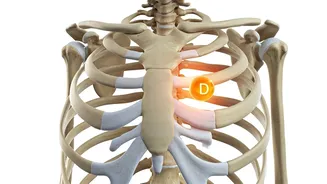Sunshine's Paradoxical Absence
The common assumption is that ample sunlight exposure should naturally provide sufficient Vitamin D. However, India presents a peculiar scenario where
Vitamin D deficiency is prevalent despite the country's geographical location. This contradiction arises from various factors that impede the body's ability to synthesize Vitamin D from sunlight. Cultural norms, lifestyle habits, and environmental conditions play pivotal roles. For example, traditional attire that covers a significant portion of the body, coupled with indoor-dominated lifestyles, limits sun exposure. Additionally, the intensity of sunlight varies based on the time of day and the season, which may also affect Vitamin D synthesis. To effectively tackle this problem, understanding these intricate dynamics is essential.
Dietary Deficiencies Unveiled
The dietary intake also severely influences Vitamin D levels. Vitamin D is naturally present in only a few foods, like fatty fish, egg yolks, and fortified foods. The diets in India often lack these Vitamin D-rich elements. Vegetarianism, widely practiced across the country, can further complicate the situation. Plant-based sources of Vitamin D are limited, leading to lower intakes. Furthermore, the preparation methods of food and cooking habits could affect the nutritional value of the foods. Therefore, supplementing with Vitamin D through fortified foods or supplements becomes necessary to prevent deficiencies. This necessitates promoting dietary awareness and encouraging practices that promote nutritional balance to combat the vitamin D problem.
Lifestyle’s Impacting Factors
Lifestyle choices significantly contribute to the prevalence of Vitamin D deficiency. Sedentary lifestyles, common in urban areas, reduce outdoor exposure, diminishing opportunities for Vitamin D synthesis. The increasing preference for indoor activities, such as work from home setups and extensive use of electronic gadgets, lessens time spent in the sun. Moreover, pollution, which is high in major Indian cities, can obstruct sunlight and further lower Vitamin D production. Individual variations in skin pigmentation also affect the efficiency of Vitamin D synthesis; darker skin produces less Vitamin D than lighter skin due to the higher concentration of melanin. Addressing these lifestyle-related issues through promoting outdoor activities, advocating for regular sun exposure, and mitigating pollution is necessary to combat Vitamin D deficiency.
Combating the Crisis
The challenge of Vitamin D deficiency calls for an integrated approach that combines awareness, dietary changes, and supplementation. Health campaigns that educate the public about the importance of Vitamin D and the risk factors associated with deficiency are important. Educating people on Vitamin D-rich foods and the use of supplements can help address dietary inadequacy. Medical professionals should regularly check Vitamin D levels and prescribe appropriate supplements when needed. It is also essential to encourage outdoor activities and sun exposure when safe. By adopting a comprehensive strategy that focuses on lifestyle modifications, dietary improvements, and targeted interventions, India can successfully address its Vitamin D crisis and improve the overall health of its population.


